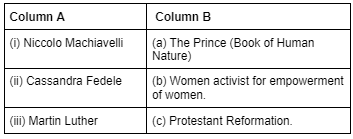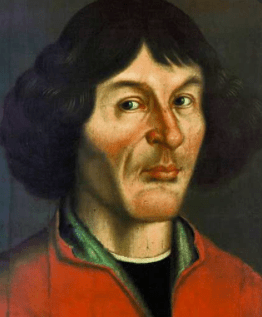Test: Changing Cultural Traditions- Assertion & Reason Type Questions - MPTET MCQ
10 Questions MCQ Test - Test: Changing Cultural Traditions- Assertion & Reason Type Questions
Direction: For each part choose from the following:
Assertion (A): From 1417, the popes became politically stronger.
Reason (R): They actively encouraged the study of Rome’s history.
Direction: For each part choose from the following:
Assertion (A): Humanists thought that they were restoring ‘true civilization’ after centuries of darkness.
Reason (R): They believed that a ‘dark age’ had set in after the collapse of the Roman Empire.
Direction: For each part choose from the following:
Assertion (A): Many scholars were indebted toArab translators who had carefully preserved and translated ancient manuscripts.
Reason (R): Among the Christian writers who were regarded as men of wisdom in the Italian world were Ibn Sina.
Match the persons with the event/works related to them

Match the persons with the event/works related to them

Match the persons with the event/works related to them

Write true or false against the following statements:
Andreas Vesalius wrote his-On Anatomy in 1575.
Identify the following image and write their names:

Identify the following image and write their names:

Identify the following image and write their names:















